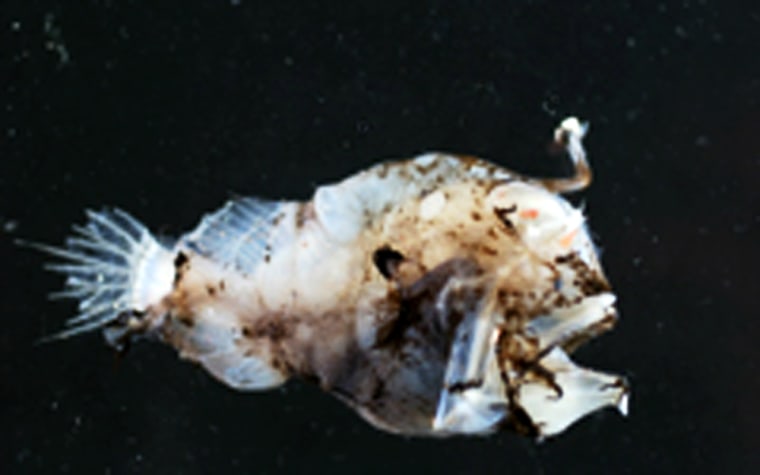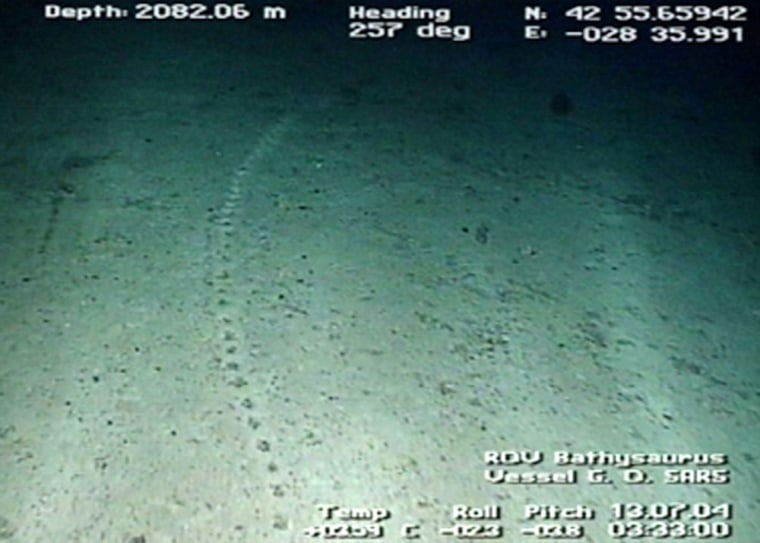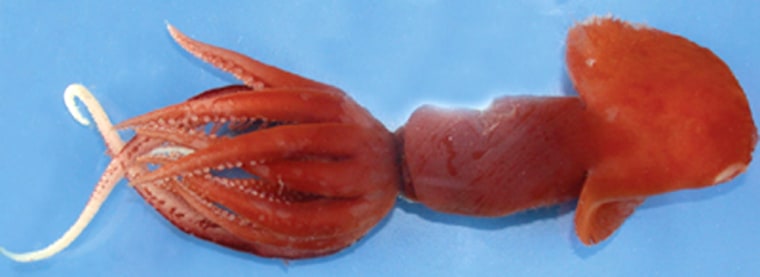Scientists said Thursday they may have found several new species of marine life, but also signs of deep-sea trash, after probing the deep waters of the Atlantic Ocean in one of the most extensive marine expeditions in history.
Researchers on the MAR-ECO expedition, which spent two months mapping the undersea ecosystem around the Mid-Atlantic Ridge, the world’s largest underwater mountain range, said they found an unexpected diversity of marine life near the sea bottom, previously thought to be a largely desolate expanse.

Using highly advanced echo-sounders, robotic deep-sea vehicles and trawl nets, the expedition brought back more than 350 species of fish and squid.
At least five of those, including a deep-sea anglerfish and two unusual squids, seem to be new species, they said. Many other species had never before been found near the ridge, which stretches more than 3,728 miles between Iceland and the Azores.
Lost fishing gear, plastic bags
But on their dives using remotely operated vehicles, or ROVs, they also found evidence of humanity's presence in the deep sea. "During ROV dives we observed occasionally lost fishing gear, primarily in rugged terrain on top of mounds," they said in a statement. "On one occasion a trawl net was found." On others longlines used by trawlers were spotted.
"Another sign" on man's impact, they said, "is the frequent occurrence of garbage, e.g. plastic bags and other objects, ... at all depths over very wide areas."
The Norwegian-led MAR-ECO expedition is a pilot project of the 10-year, $1 billion Census of Marine Life project, an international research endeavor that aims to provide scientists with a better understanding of deep sea ecosystems, and explain how they change over time.
More than 300 scientists from 53 countries are involved in the census project.
“Investigations of marine life have just begun,” Odd Aksel Bergstad, the lead scientist on the MAR-ECO expedition, said in a statement, “and it’s only now, when we can utilize custom-built research ships and the finest modern technology, that we can learn how ecosystems in the oceans are structured and function.”
Mysterious burrows found
In one ROV dive, the researchers also found mysterious burrows left by an unknown animal on an undersea mountain 6,600 feet below the surface.

"The traces were almost straight or curved lines of regularly placed perforations, as if somebody used a sewing machine to create this landscape," the scientists said. "The lines, some of them several meters long, were going in different directions."
"Naively we were sitting for a long time looking inside the holes hoping to see who makes them. With no success!" they added. "The only idea that came to our minds was that these rows of burrows are made by some big crustacean, maybe a deep-sea blind lobster."
The MAR-ECO expedition, which included 60 scientists, students and technicians from 13 countries, also found rings of plankton organisms that measured 6.2 miles wide. The rings, which are produced by underwater currents, are the largest ever found, the statement said.
Logs and photos from the expedition are online at www.mar-eco.no.
